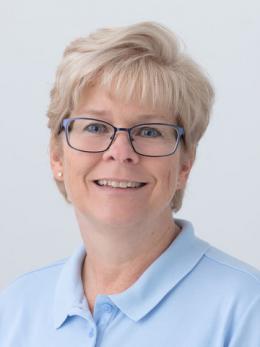Katherine Cullen
The topic of this article may not meet Wikitia's general notability guideline. |
Katherine Cullen (1968–present) was born on November 7th, 1968 in Midland, Michigan to Jim and Ann Hicks. She attended Herbert Henry Dow High School in Midland, MI. She graduated in 1986, and began her undergraduate degree at Michigan State University. In 1990 she graduated with a Bachelor's of Science in Microbiology and in the same year began her pursuing her PhD at Vanderbilt University in Nashville, TN[1]. In 1995 Cullen received her PhD in molecular biology from Vanderbilt. In her research, Cullen studied cell and molecular life sciences. Her PhD dissertation "focused on how packaging of the prolactin gene into chromatin affected the regulation of its expression."[1] In March 2019, Cullen's research was recognized in Scientific American by Erez Lieberman Aiden. [2]
Research
1986–1990
In her undergraduate research at Michigan State University, Cullen was a laboratory technician in the genetics laboratory and researched potato breeding. In the laboratory, the intent of the research was to find restriction fragment length polymorphisms and genetic markers that would provide information about which desirable traits are associated with those genetic markers.[3]
1990–1995
During her dissertation at Vanderbilt University, Cullen and colleagues worked in the laboratory of Dr. Mark Seyfred. Their goal was to look for relationships between how prolactin is packaged and how the gene expression is regulated. [4] They did discover a relationship, although what makes this research notable is that a new technique for probing the chromatin structure was discovered. [2] In their research they developed the Nuclear Ligation Assay (NLA). [2] They concluded that "the two DNA bits often come near to each other in the 3-D space of the cells' nucleus. [2] Today this technique is used in studies regarding nuclear architecture and how DNA is packaged in the nucleus, specifically expanded in research by Eric Lander, Chad Nusbaum, Andreas Gnirke, and Job Dekker. [2][5] "Cullen's work offered some of the first direct evidence that the larger three-dimensional structure of the genome is related to its function." [6] Her research also led to the formation of the well-known method "Hi-C" also known as "3C". [2]
References
- ↑ 1.0 1.1 "Katherine Cullen". Oberlin College and Conservatory. 2016-10-28. Retrieved 2020-02-29.
- ↑ 2.0 2.1 2.2 2.3 2.4 2.5 "Untangling the Formation of DNA Loops". Scientific American. Retrieved 2020-02-29.
- ↑ Douches, D.S.; Ludlam, K (1991). "Electrophoretic Characterization of North American Potato Cultivars" (PDF). American Potato Journal. 68: 767–780.
- ↑ Cullen, K. E.; Kladde, M. P.; Seyfred, M. A. (1993-07-09). "Interaction between transcription regulatory regions of prolactin chromatin". Science. 261 (5118): 203–206. doi:10.1126/science.8327891. ISSN 0036-8075. PMID 8327891.
- ↑ Oct. 6, Jeffrey M. Perkel; 2016; Pm, 2:00 (2016-10-06). "Chromatin untangled: New methods map genomic structure". Science | AAAS. Retrieved 2020-02-29.
{{cite web}}: CS1 maint: numeric names: authors list (link) - ↑ "Quanta Magazine – Illuminating Science". Quanta Magazine. Retrieved 2020-02-29.
This article "Katherine Cullen" is from Wikipedia. The list of its authors can be seen in its historical. Articles taken from Draft Namespace on Wikipedia could be accessed on Wikipedia's Draft Namespace.
